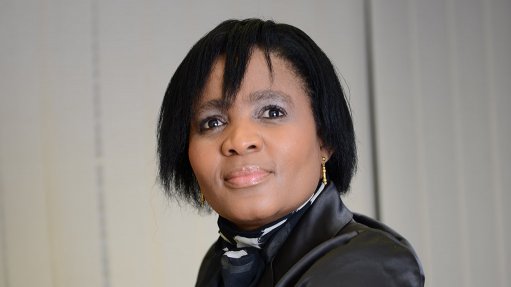
Broadband Infraco CEO Puleng Kwele
South Africa was rapidly developing technology to enable broadband, but was falling behind as other countries “moved faster”, Cisco VP of global technology policy Dr Robert Pepper said on Monday.
The country had progressed its broadband ambitions well, with the nation on par with many countries with a comparative gross domestic product (GDP), he noted.
In line with countries with a similar GDP, South Africa had about 40 broadband users per 100 people, he said at a panel discussion at the Southern Africa Telecommunications Networks and Applications Conference (Satnac).
The country’s mobile broadband subscriptions reached close to 30 per 100 users, higher than the recorded 20 users per 100 people in countries with similar-sized GDPs. However, the country had fallen behind in terms of fixed broadband, where it recorded five users per 100 people, compared with ten users per 100 people in countries with similar GDPs.
Despite reports of South Africa’s lagging, inadequate policy structures emerging, Pepper said the World Economic Forum (WEF) had, in its latest Global Information Technology Report, ranked South Africa thirty-second out of 144 countries in terms of its regulations and policies.
South Africa’s limiting policy and regulatory framework have been hampering the nation’s development, roll-out and ability to lower the cost of broadband, other panel members agreed.
Broadband Infraco CEO Puleng Kwele said the regulations and policies governing the South African broadband space had actually widened the digital divide and had not “evolved” as broadband access developed.
She pointed out that the information and communications technology policies had pockets of inefficiency.
“Now is the time for us to rethink and do things differently to close the digital divide … [We need to look at] how we future-proof our developments … and not just plan for the next five years,” she noted.
Pepper noted that South Africa had not progressed fast enough and had fallen behind in competitiveness and network readiness.
The WEF report ranked South Africa's competitiveness at 52 of 144 – a decline from eight years before when the country rated at number 32, while the network readiness of the country, which was highly correlated with national competitiveness, fell from a ranking of 37 in 2004, to 70 in 2012.
“We have made huge progress, [but] its not fast enough,” he explained, adding that other countries were overtaking South Africa, which was “standing still”.
Insufficient infrastructure and collaboration also emerged as key challenges during the panel discussion.
The panel comprised Kwele, Telkom South Africa wholesale and networks MD Bashier Sallie, MTN chief enterprise business officer Lambo Kanagaratnam and IBM telecommunications executive Kumaran Nair.
Nair commented that “we are overly focused on moving to the next technology, instead of focusing on the current issues”, which he said included bringing access to all at a national level and building the required architecture.
“Sometimes older technology is sufficient to bridge the divide and [ensure digital] inclusion. The platform shouldn’t be the focus; it’s how we roll it out”.
Kwele added that fourth-generation networks were for the “haves” and was just adding “another layer of data where there is already access”, while Sallie believed that an analysis of individual communities could enable the deployment of the “right mix” of technologies.
Pepper believed that implementing a national broadband plan, which South Africa was currently developing, could place South Africa on the fast track again.
The country’s National Broadband Policy was aimed at increasing fixed broadband adoption by 25% and mobile broadband by over 30%.
Further, mobile broadband penetration was estimated to more than double in a competitive market, compared with a market with a monopoly.
But public–private partnerships were critical to the success of any broadband plan, as they focused on large profits, which led to the fragmented deployment of networks.
The private sector was required for effective roll-out, but it had to “share” and not allow government to absorb all the losses of infrastructure and service development in the underserviced regions.
Mobile operators had developed networks in the 12% of South Africa’s landmass that allowed them to make a profit, with market failure occurring outside these regions.